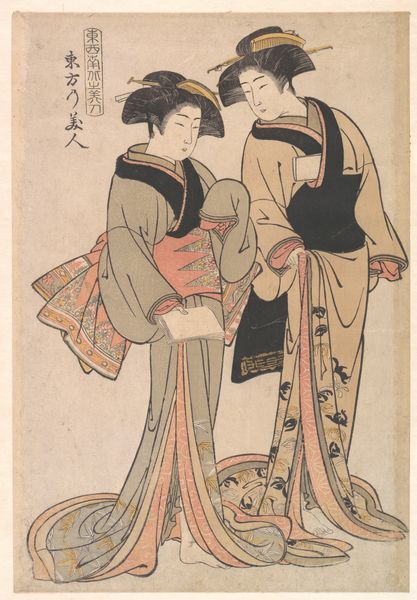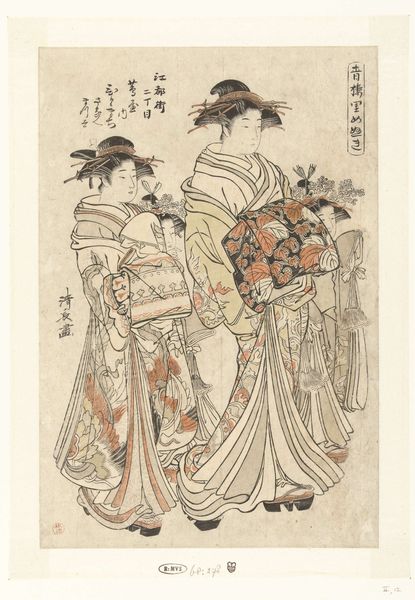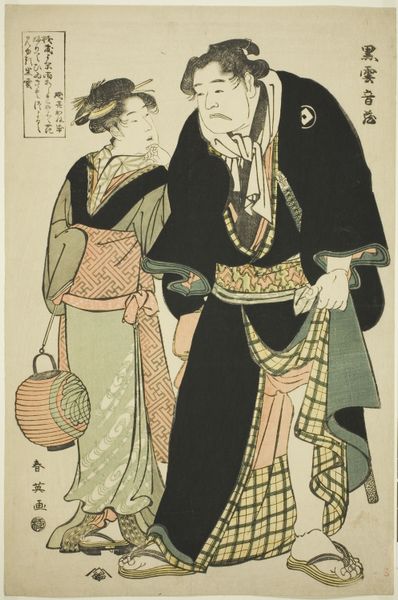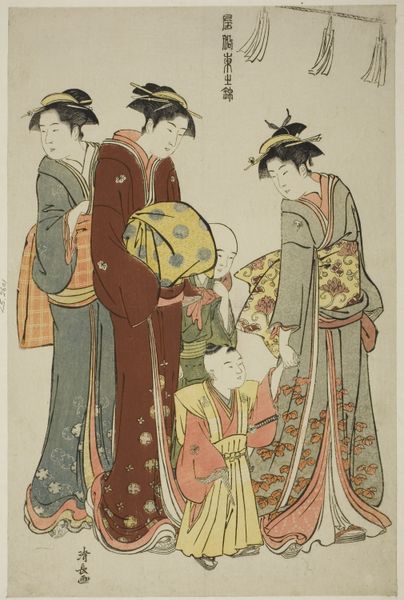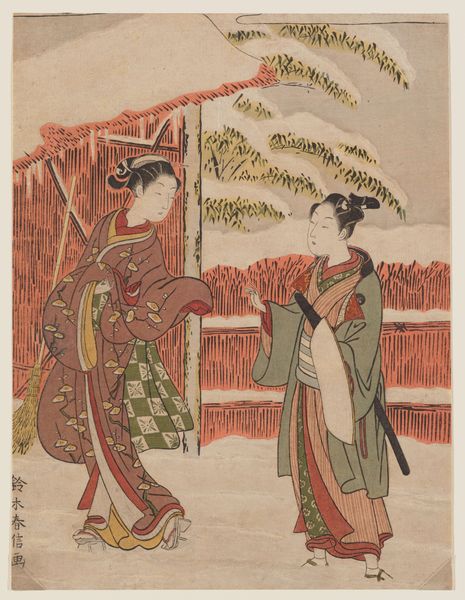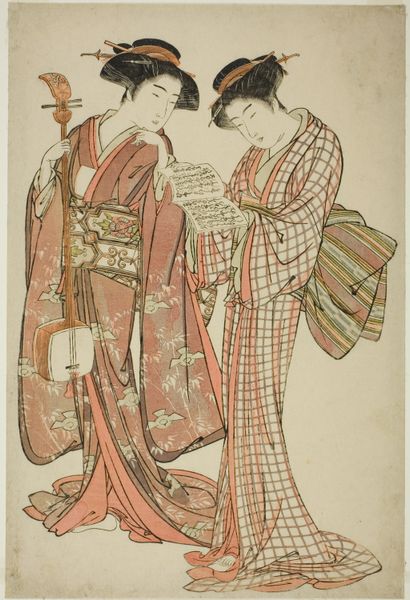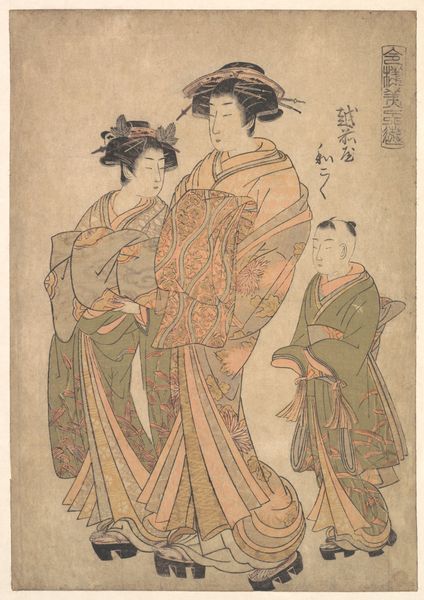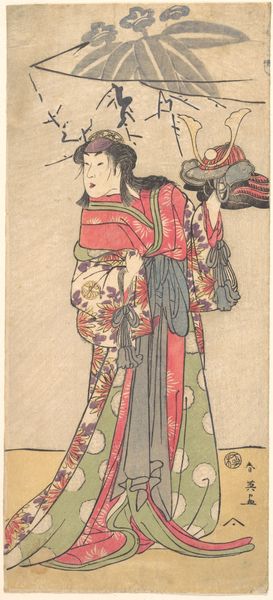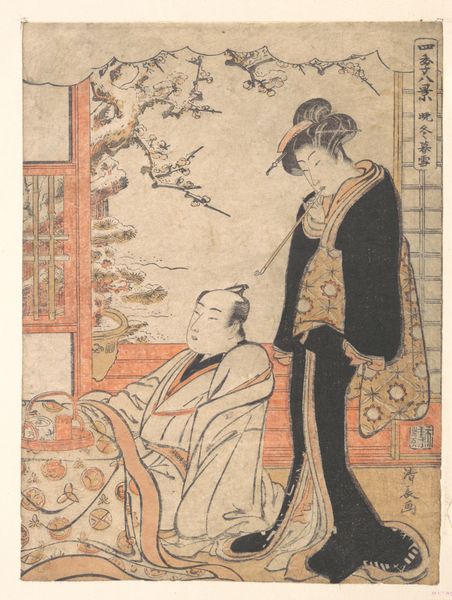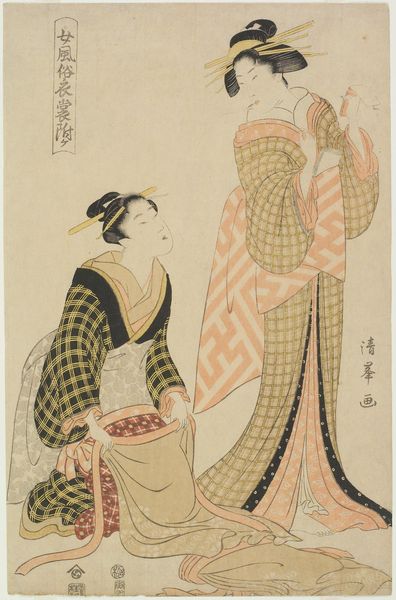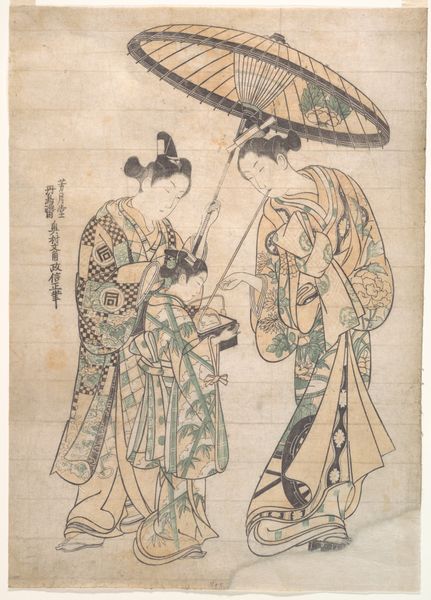
The Actors Segawa Kikunojo III as the Courtesan Sumizome (right), and Ichikawa Monnosuke II as Goinosuke Yoshimine (left), in the Play Juni-hitoe Komachi-zakura, Performed at the Kiri Theater in the Eleventh Month, 1784 c. 1784
0:00
0:00
print, woodcut
# print
#
asian-art
#
ukiyo-e
#
figuration
#
woodcut
Dimensions: 29.7 × 21.2 cm (11 11/16 × 5 5/16 in.)
Copyright: Public Domain
This woodblock print by Katsukawa Shunko depicts two actors in a Kabuki play in Japan in 1784. The print provides a snapshot into the vibrant theatrical culture of the Edo period. Kabuki was a popular form of entertainment, especially among the merchant classes, and prints like these served as both souvenirs and advertisements for the plays. The artist, Katsukawa Shunko, was a member of the Katsukawa school, known for its portraits of Kabuki actors. The print captures the likenesses of Segawa Kikunojo III and Ichikawa Monnosuke II, in their roles as a courtesan and a samurai. Kabuki performances were often elaborate affairs, with costumes, makeup, and stylized movements. The actors, elevated to celebrity status, were trendsetters in fashion and lifestyle. By studying playbills, theater records, and other visual sources, we can begin to understand the cultural significance of Kabuki, and appreciate the complex ways in which art reflects and shapes society.
Comments
No comments
Be the first to comment and join the conversation on the ultimate creative platform.
